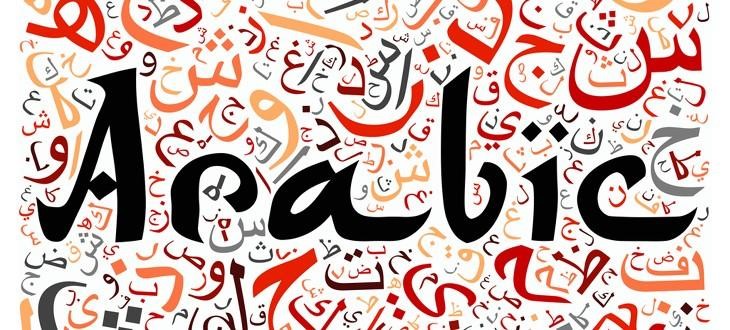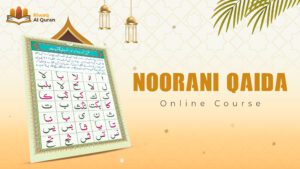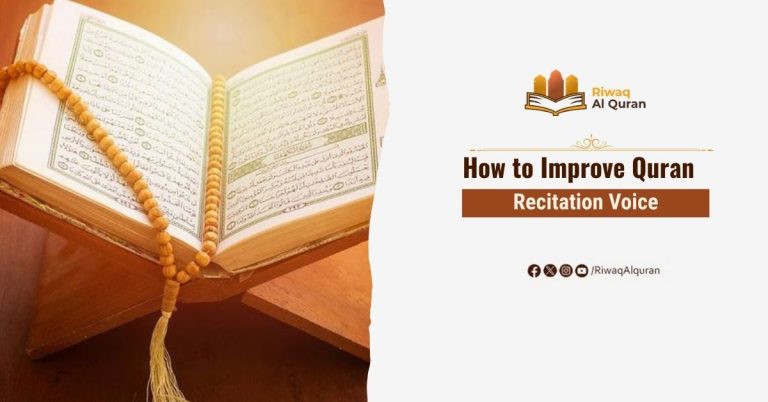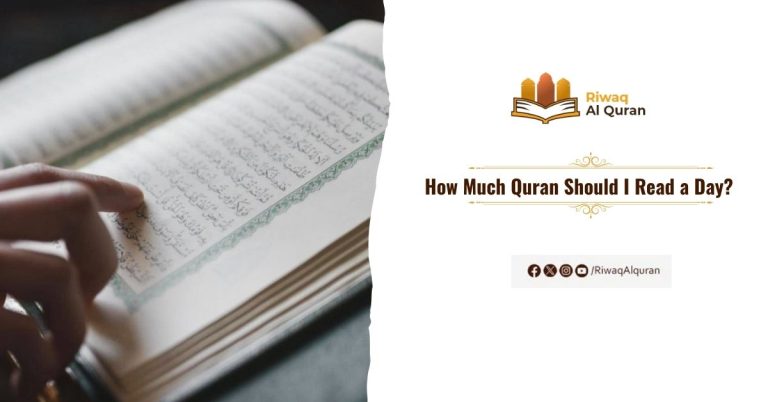Noorani Qaida is one of the best and most effective curriculums used to learn Quran for kids as well as adults. It is perfect for beginners who want to learn Quranic Arabic and the sounds of each letter in a proper way to learn Noorani Qaida online.
There are more than one curriculum used in this regard such as Noorul-Bayan and Rehmani qaida for tajweed beginners. As for the Noorani Qaida, it teaches you how to read Quran correctly for it contains nearly all the pronunciation rules needed when studying the recitation of the Holy Quran.
In addition to that, you do not need to have any previous knowledge in reading Quran learning to study it because it starts with the Arabic alphabet for beginners and the connected forms of letters in different positions using colors and other interactive teaching methods. If you want some practical tips on how to learn Noorani Qaida , here is a list of 10 fruitful ones:
Table of Contents
1. Secure the Right Resources
To begin learning the Noorani Qaida effectively, it is crucial to start with authentic and reliable resources. The Noorani Qaida should be from a trusted source, preferably verified by respected institutions like Darul-Uloom Deoband or similar renowned educational bodies. Using a well-established and accurate version ensures that you are following the correct rules of pronunciation and Tajweed.
For the best clarity during reading and learning, opt for black/red print editions of the Noorani Qaida. The contrast in colors improves visual recognition of the letters, making it easier to differentiate between similar-looking Arabic letters. This will help you avoid common mistakes and strengthen your recognition skills.
Additionally, supplement your study with digital audio resources, especially recordings from certified Qaris such as Qari Abdul Basit. Listening to these high-quality recordings will help familiarize you with the correct pronunciation, rhythm, and Tajweed rules.
2. Understand the fundamentals of the Noorani Qaida book
Some people feel so motivated when they start to learn Noorani Qaida and have a desire to achieve much, so they just do not give the fundamentals due time and concentration and that is a fatal mistake. The truth is, your level in Arabic and Quran recitation rules will never improve properly if you do so because you need to master the basics first.
3. Master the Articulation Map
A key component of learning the Noorani Qaida is understanding and memorizing the 17 makharij (articulation points). The makharij are the places in the mouth and throat where each Arabic letter is produced. Learning these articulation points is crucial for clear and accurate pronunciation of the Arabic letters.
Use an anatomical diagram that shows the makharij to help you visualize and memorize where each sound originates in the mouth. The diagram acts as a helpful map to guide your tongue, lips, and throat to the correct positions. Understanding these articulation points will allow you to pronounce the letters correctly, which is the foundation of Tajweed.
Another effective technique is to practice letter families. For example, the letters ط، د، ت all share a similar articulation point (from the tip of the tongue). Drill these letter families daily to build muscle memory and reinforce proper pronunciation. As you practice these letters together, you’ll develop a more intuitive understanding of how to pronounce them correctly in different contexts.
Expert Tip: Dedicate 20 minutes daily to mirror exercises. Standing in front of a mirror while practicing allows you to observe your mouth, tongue, and lip movements. This will help you refine your articulation, ensuring that you are correctly positioning your tongue and lips for each letter. Visual feedback is invaluable for correcting any mistakes in pronunciation early in your learning process.
4. Progressive Lesson Plan
A structured, progressive lesson plan is essential for mastering the Noorani Qaida systematically. Here’s how you can break down your learning in a way that gradually builds your skills and ensures steady progress:
| Week | Focus Area | Key Drills |
|---|---|---|
| 3-4 | Individual letters (isolated forms) | 5x repetition per letter with audio matching |
| 5-6 | Letter connections (beginning/middle/end) | Compound pronunciation drills |
| 7-8 | Basic Tajweed rules (Madd, Ghunna) | Slow-motion syllable breakdowns |
Weeks 3-4: Focus on Individual Letters (Isolated Forms)
In the early stages of learning, dedicate your time to mastering the individual letters of the Arabic alphabet in their isolated forms. This will help you learn the distinct sounds of each letter without the complication of connecting them to others.
Key Drill: For each letter, practice 5x repetition per letter, listening to the audio matching the letter’s pronunciation. Focus on correct articulation and making sure you are pronouncing each letter clearly and accurately. Repetition is key in embedding the correct sounds into your memory.
Weeks 5-6: Letter Connections (Beginning, Middle, End)
Once you’ve mastered individual letters, the next step is to learn how letters connect to one another at the beginning, middle, and end of words. Understanding these connections is crucial for reading smoothly, as Arabic letters change their shape depending on where they occur in a word.
Key Drill: Practice compound pronunciation drills, where you connect the letters and pronounce them in sequence. This will help you transition smoothly between letters, ensuring that your recitation flows naturally and without hesitation. Use the Noorani Qaida’s practice words and phrases to reinforce this step.
Weeks 7-8: Basic Tajweed Rules (Madd, Ghunna)
As you progress, start incorporating the basic Tajweed rules such as Madd (elongation) and Ghunna (nasal sounds). These rules will help you improve the rhythm and flow of your recitation, ensuring that your pronunciation aligns with proper Tajweed standards.
Key Drill: Break down syllables in slow-motion, paying attention to each sound’s correct length and nasal quality. This practice will help you internalize the rules of elongation and nasalization, essential for the accurate recitation of the Quran.
5. The 3×3 Practice Method
To refine your recitation skills and boost your accuracy, use the 3×3 practice method, a powerful technique for improving both listening and speaking skills:
- Listen to the teacher’s recording 3 times. The first time, focus on overall pronunciation. The second time, pay attention to specific details like intonation and rhythm. The third time, concentrate on the nuances of Tajweed and articulation.
- Repeat while recording yourself. After listening to the recording, immediately record yourself reciting the same portion. This helps in internalizing the correct pronunciation and rhythm.
- Compare your recording to the original 3 times. Listen to your recording alongside the teacher’s original audio, comparing each part. Identify areas where your pronunciation might differ and refine them.
Clinical Finding: Research published in the Journal of Islamic Pedagogy (2022) shows that this method improves accuracy by 62% compared to passive repetition alone. This structured approach ensures that you’re actively engaging with both listening and speaking, which accelerates your learning and strengthens your memorization of proper pronunciation and Tajweed rules.
6. Error Elimination Protocol
To ensure continuous improvement in your Noorani Qaida learning journey, it is essential to implement an Error Elimination Protocol. This structured approach helps you identify, correct, and avoid common mistakes in pronunciation and Tajweed. Here’s how to effectively track and address errors:
Maintain an Error Logbook:
Create a dedicated logbook or digital document where you can track the errors you make during practice sessions. By documenting mistakes, you can identify patterns and focus on correcting specific areas of weakness. Some common errors to track include:
- Letter Substitutions: Track instances where you confuse similar letters, such as س (seen) vs ص (saad). These letters are pronounced differently but may appear visually similar, making it easy to confuse them, especially for beginners.
- Vowel Mistakes: Note any errors related to vowel markings, such as confusing fatha (َ) with kasra (ِ), or damma (ُ) with fatha. These subtle vowel differences can drastically change the meaning of words.
- Timing Errors (Madd Letters): Keep track of any mistakes with the elongation of Madd letters. Timing is crucial for Madd letters, as they should be elongated correctly according to Tajweed rules. Errors in timing can distort the intended meaning or flow of recitation.
Regularly review your logbook to track progress and focus your efforts on correcting frequent mistakes. This method of self-assessment ensures a targeted approach to improving your recitation skills.
6. Speed Gradation Training
While accuracy and precision are crucial, it’s also important to develop fluency and speed in your recitation without compromising the quality of Tajweed. Speed Gradation Training allows you to build speed progressively while maintaining the same level of accuracy and control.
Start Slow (40 bpm):
Begin by reciting at a slow pace, setting the tempo at around 40 beats per minute (bpm). At this speed, focus on precision, ensuring that each letter is articulated correctly and each Tajweed rule is applied properly. Slow recitation is essential for internalizing the sounds and mastering pronunciation.
Increase Speed Gradually:
Each week, gradually increase the speed by 5 bpm, allowing your body and mind to adapt to the faster tempo while maintaining precision. For example, after a few weeks, you can work your way up to reciting at 50 bpm, then 55 bpm, and so on. This incremental increase prevents you from rushing through your recitation and ensures that your Tajweed remains intact as you gain fluency.
Use a Metronome App:
To keep track of your speed, use a metronome app to calibrate your pace. The metronome will provide a steady beat that you can follow, helping you maintain a consistent tempo and avoid straining to recite too quickly. Many apps allow you to adjust the beats per minute, making it easy to track your progress.
By incorporating speed gradation training, you will develop the ability to recite the Quran smoothly and naturally at varying speeds, all while ensuring that your Tajweed remains precise and accurate.
7. Revise! Revise! Revise!
No one can deny the indispensable importance of regular revision. When you allocate sufficient time for revising what you learn of Arabic Noorani Qaida, you allow yourself to understand it better and recollect information in an easy and effective way. Day by day, you will learn to read and write Arabic and you will totally master all the Quran recitation rules that you once thought that they were impossible to learn.
8. Search for a qualified teacher
One of the valuable pieces of advice that can save you a lot of time is to seek the help of a native Quran teacher who is fully aware of the methods of Qaida teaching to beginners. Why some are googling “Quran teacher near me” when one can find the best Quran tutors on the internet and learn Noorani Qaida in the comfort of his/her home? It can save you a lot of time and will teach you how to learn Quran easily.
Another fruitful and effective tip is to search for proper Quran online classes to learn Noorani Qaida . This can be an easy way to learn to read Quran with no pronunciation mistakes because you will have a qualified Quran tutor who will teach you the correct sound of letters all through the journey of teaching Quran and who will train you to read Quran faster in an easy and interactive way.
9. Always remind yourself of the reward from Allah
The Arabic language is perceived as a sacred language as our Honorable Quran and the entire Islamic heritage are written in it. Whenever you feel like giving up, remind yourself that Arabic is considered the symbol of Islam, and learning Quran recitation the way it was revealed to prophet Muhammad PBUH is, undoubtedly, a virtue. The Prophet PBUH said: The best among you (Muslims) are those who learn the Qur’an and teach it. (Sahih Al-Bukhari)

10- Carve out specific time every day
If you really want to follow along and retain what you learn, try your best to set aside a specific time every day just to learn Noorani Qaida. This tip is of great importance and you will notice a huge improvement over time. Always remember: there can be no mastery without exerting consistent efforts.
It is said that there is no failure except in no longer trying. Sometimes it seems there is no hope at all and reading Quran learning is quite impossible but it definitely is not that hard. Always keep the goal of how to learn Quranic Arabic in front of you and never give up. Day by day, it will get easier and easier until the Quran recitation with Tajweed becomes a piece of cake.
How to learn Noorani Qaida for Beginners?
Here is our step-by-step guide to help you learn Noorani Qaida online
1. Learn the Pronunciation
The first and the most important step of learning Noorani Qaida is learning the pronunciation of words.
If you are taking help from a teacher, your teacher will repeat the words constantly for you to understand the rhythm. You would have to repeat the words after your teacher to master your pronunciation and once you are done with it, you are ready to move towards the next step.
2. Mix letters together
Once you have learnt how to pronounce words correctly, you will move forward with the compound syllables. In this step, your teacher will teach you how to mix letters together to form a word with a meaning, and then pronounce it.
3. Learn vowels
The next step is to learn the vowels of the Arabic language. If you look at an Arabic text without vowels, it would seem like it’s mostly consonants. If you are a non-native, you will have a hard time reading the lines in this case. The reason behind this is that most vowels in Arabic are transcribed as vowing signs and not as independent letters. For beginners vowing signs are necessary, in order to read Arabic text correctly because without these signs, most of the Arabic words are going to look the same to you.
Following these steps are going to help you a lot to learn Noorani Qaida effectively.
Learn Noorani Qaida With Riwaq al-Quran:
Riwaq Al Quran Institute puts you on the road to an effective and interactive noorani qaida online learning as we offer a special variety of online Quran courses specially designed for kids and adults of different ages and levels.
Have a look at our distinctive online Quran learning courses and contact us now to help you choose what suits you best:
- Noorani Qaida Online Course.
- Quran Online for Kids.
- Online Quran Recitation Course.
- Quran Hifz Online Course.
- Online Quran Tafseer Course.
Conclusion
Now that we have reached the end of our blog on how to learn Noorani Qaida , we hope that all your concerns have been cleared. While we sign off, we would like to mention here again that learning Noorani Qaida is easy, if you have sheer determination and follow the guidelines. Having a good online tutur is going to help you immensely in this journey and if you are ready to read and learn Quran, Noorani Qaida is where you should start from.


































